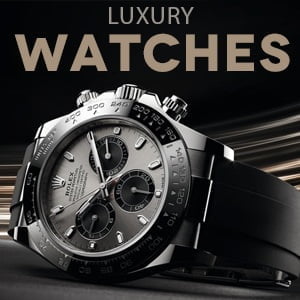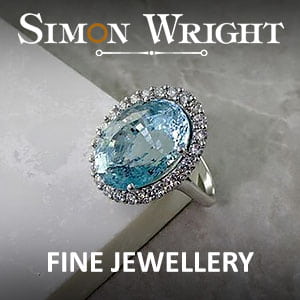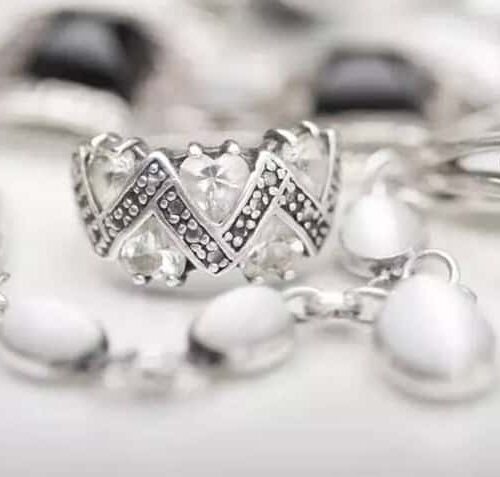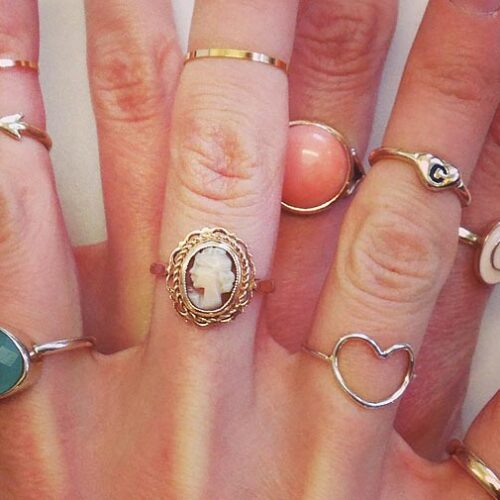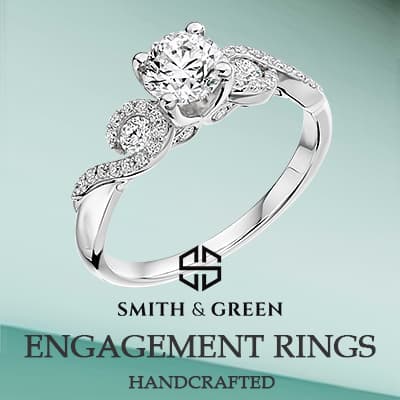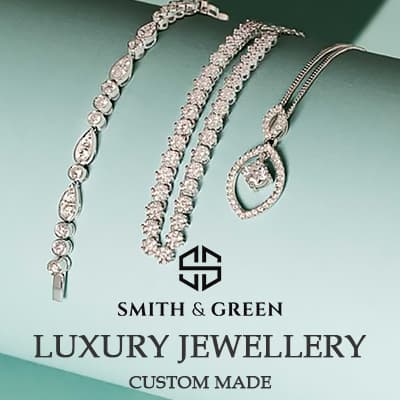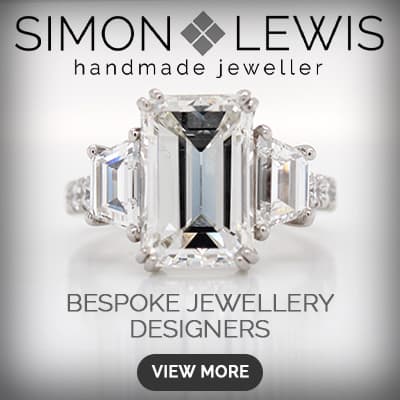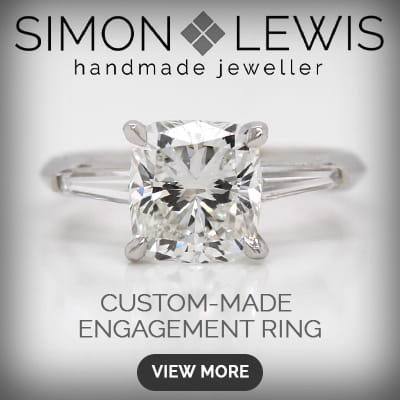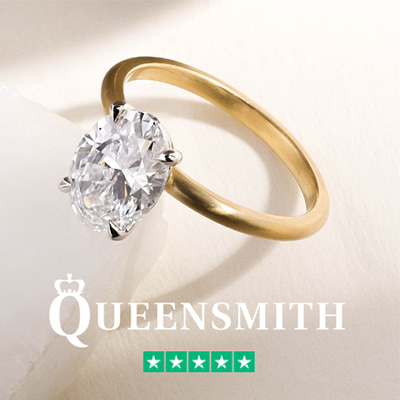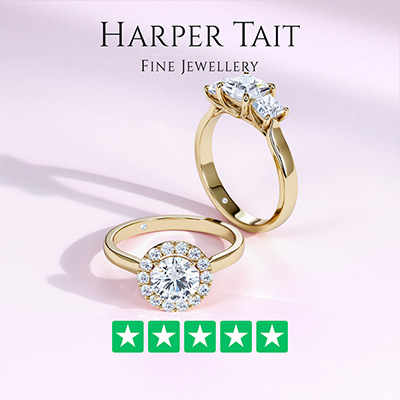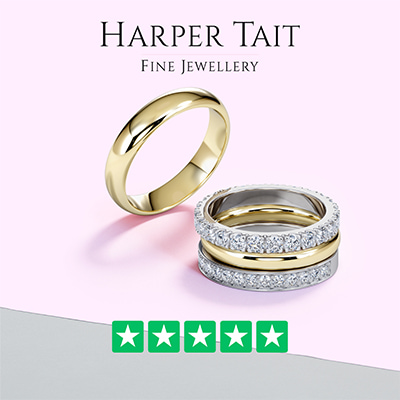In the age of rapidly advancing technology, our relationship with electronic devices has led to a growing issue – electronic waste or e-waste. With an ever-increasing number of laptops, mobile phones, and other gadgets being discarded, the need to find sustainable solutions for managing electronic waste has become paramount. The United Kingdom, known for its rich history and tradition, is now taking a bold step towards addressing this challenge by extracting precious metals from e-waste. This innovative approach not only reduces our reliance on raw materials but also offers a unique opportunity for the world of luxury jewellery. In this article, we delve into the fascinating world of ethical luxury, where gold jewellery is made from recycled phones and laptops.
The Royal Mint’s Pioneering Efforts
Behind the scenes at the Royal Mint near Cardiff, South Wales, a groundbreaking initiative is unfolding. For over 30 nations, the Royal Mint has been synonymous with producing billions of coins. However, in recent years, it has embarked on a journey to recover precious metals hidden within electronic waste, an endeavour that is set to revolutionise the way we view luxury jewellery.
Hayley Messenger, a chemist specialising in sustainable precious metals, leads the charge. With an air of secrecy, she reveals the “magic green solution” – a key component in their revolutionary process. This solution, developed in collaboration with Canadian start-up Excir, has the remarkable ability to extract 99% of gold from printed circuit boards found in discarded laptops and mobile phones. This breakthrough paves the way for the Royal Mint’s new factory, which, once fully operational, will process 90 tonnes of circuit boards per week, recovering hundreds of kilograms of gold annually.
The process itself is nothing short of alchemical. The circuit boards are immersed in the “magic green solution,” and in just four minutes, gold dissolves and leaches out into the liquid. This chemical solution is reused up to 20 times, with the concentration of dissolved gold increasing each time. The gold is then transformed into solid metal, melted down, and crafted into exquisite pendant necklaces, earrings, and cufflinks. What sets this process apart is its scalability and environmentally friendly nature, as it operates at room temperature with significantly reduced greenhouse gas emissions compared to traditional smelting methods.
The Growing E-Waste Crisis
E-waste, also known as waste electrical and electronic equipment (WEEE), is the world’s fastest-growing waste stream. Shockingly, an estimated 50 million tonnes of e-waste are generated globally each year, surpassing the combined weight of all commercial airliners ever produced. Regrettably, only 20% of this waste is formally recycled, with the remainder often ending up in landfills or being incinerated.
One of the startling findings is that 7% of the world’s gold is currently trapped within disused electronics. The conventional method of gold extraction typically involves shipping e-waste to countries where it is smelted down at high temperatures, resulting in a crude and carbon-intensive process. This approach not only contributes to carbon emissions but also perpetuates a global supply chain that often involves long-distance transport.
Mark Loveridge, the commercial director at the Royal Mint, underscores the need for change, stating, “If we’re producing the waste, it should be our responsibility to sort it; we shouldn’t be shipping it to another country to sort it for us.” The Royal Mint’s vision is to establish localised recycling plants that significantly reduce waste miles, thereby promoting sustainability and ethical practices.
The Path to Zero Waste
Inside the Royal Mint’s new processing plant, a dynamic transformation takes place. Circuit boards from laptops and mobile phones, collected by a network of e-waste suppliers across the UK, undergo thorough inspection. The gold-bearing components are meticulously separated from non-gold materials through a combination of mechanical and digital processes.
The Royal Mint’s waste reprocessing plant focuses primarily on gold recycling, but the aspiration is to expand to recover other precious metals from the same circuit board raw material. This expansion aligns with the Mint’s commitment to generating 70% of its power through renewable sources like solar, wind, combined heat and power, and battery storage. This holistic approach not only recovers precious metals but also converts energy into synthetic gas to power the Mint’s facilities.
Urban mining, the concept of recovering precious metals from existing waste products, is gaining momentum. In the UK alone, households hoard an astonishing 527 million small old electrical devices, including 31 million old laptops. In the US, millions of dollars’ worth of gold and silver are discarded annually in mobile phones. It is estimated that over one billion electronic devices could be discarded each year in the US alone within a decade.
Experts emphasise the recyclability of metals, particularly gold, given the enormous environmental cost associated with traditional mining. Jewellery brands like Pandora and initiatives such as the Tokyo Olympics have already begun embracing recycled gold. However, the challenge remains in driving e-waste recycling into the mainstream.
A Vision for a Circular Economy
Kate Hinton, from Material Focus, the non-profit behind the Recycle Your Electricals campaign, underscores the importance of valuing materials that enable technology to function efficiently. She advocates for the development of advanced recovery technologies that can tackle the diverse range of materials found in electronic devices, from copper-laden chargers to intricate circuit boards.
Innovation is essential to make e-waste recycling mainstream, and several pioneering companies are leading the way. For example, US firm New Gold Recovery is developing a toxic-free method to extract gold particles from mine tailings, while UK-based N2S uses bio-leaching to recover materials from shredded IT equipment. In Australia and New Zealand, Mint, a green chemistry company, is scaling up its biorefineries to extract metals like gold and copper from e-waste using low-carbon methods.
Material Focus estimates that advanced recovery technologies could yield £13 million worth of critical raw materials annually from waste electricals in the UK. This includes circuit boards, the very heart of the e-waste challenge, where valuable materials like gold, silver, and palladium are abundant.
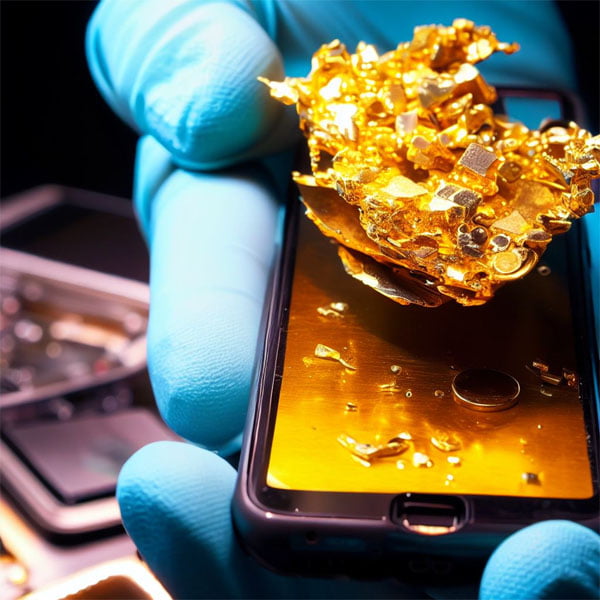
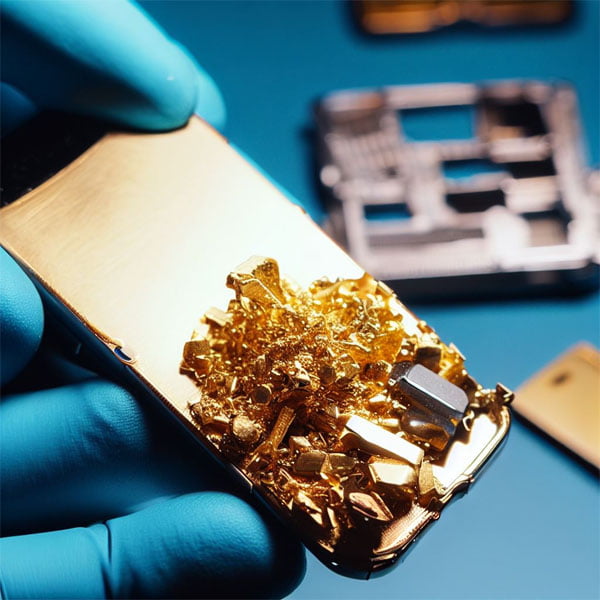
The Ethical Luxury Revolution
As the tour of the Royal Mint’s innovative factory comes to a close, the message is clear: “One person’s waste is someone else’s raw material.” The Royal Mint’s pioneering efforts not only redefine luxury by creating ethical jewellery but also offer a blueprint for a more sustainable, circular economy—one where waste is minimised, precious materials are valued, and responsibility is taken for the products we create.
In this new realm of ethical luxury, the allure of gold takes on a whole new meaning, symbolising not just beauty but also sustainability and responsibility. It’s a tale of transformation, where discarded phones and laptops find new life as exquisite pieces of jewellery and where the pursuit of beauty aligns with the preservation of our planet’s precious resources.
The Royal Mint’s journey towards ethical luxury is not only a testament to innovation but also a call to action for a more responsible and sustainable future. In a world where environmental concerns are paramount, the blending of technology, sustainability, and luxury provides a glimmer of hope and a path to a brighter future.
Hatton Garden Embraces Ethical Luxury
The impact of the Royal Mint’s ethical luxury initiative is already reverberating in the world of jewellery. Hatton Garden, London’s historic jewellery quarter, is no stranger to tradition and craftsmanship. For generations, it has been synonymous with the creation of exquisite jewellery pieces. Now, it’s also becoming a hub for ethical luxury.
Several Hatton Garden jewellery stores have recognised the value of incorporating recycled gold from electronic waste into their creations. This not only aligns with the growing demand for sustainable and ethically sourced products but also allows artisans to work with a material that carries a unique story—a story of transformation and responsible consumption.
Customers visiting Hatton Garden showrooms are increasingly seeking jewellery that not only dazzles with its design but also resonates with their values. Knowing that their adornments are crafted from recycled gold and extracted using environmentally friendly methods, adds a layer of significance to these precious pieces. It’s a beautiful fusion of artistry, sustainability, and conscious consumerism.
One such jeweller in Hatton Garden, Sarah Wright, has been at the forefront of this ethical luxury movement. Her creations now prominently feature recycled gold obtained through processes similar to those pioneered by the Royal Mint. She explains, “As a jeweller, I’ve always strived to create pieces that tell a story. With recycled gold, I’m not just crafting jewellery; I’m crafting a narrative of sustainability and responsible sourcing.”
The Royal Mint’s efforts have not only unlocked a sustainable source of precious metals but have also inspired a paradigm shift in the jewellery industry. It’s no longer just about the final product’s beauty but also about the journey it undertakes to become a work of art.
The Global Impact of Ethical Luxury
While Hatton Garden is witnessing a transformation towards ethical luxury, the ripple effect of the Royal Mint’s initiative is extending far beyond the UK. Jewellery brands worldwide are beginning to embrace recycled gold and other precious metals as a cornerstone of their collections. Pandora, a global jewellery giant, has set ambitious targets to use only recycled gold and silver by 2025, signalling a commitment to responsible sourcing.
Even on the grand stage of the Tokyo Olympics, the world witnessed the power of recycling. Metal was extracted from six million mobile phones and almost 72,000 tonnes of e-waste to create the coveted gold, silver, and bronze medals. It was a testament to the potential of recycling not just as an environmental imperative but as a celebration of sustainability.
Kate Hinton, from Material Focus, underscores the importance of shifting perceptions about technology and its inner workings. “The challenge with tech is that it’s presented to us as amazing, clean, shiny, and we don’t really think about what’s inside that. Let’s value the materials that allow that tech to work and keep [these critical raw materials] in the system for as long as possible,” she remarks.
As society becomes increasingly conscious of the environmental and social impacts of conventional mining, new green technologies are poised to scale up, driving the growth of a more circular economy for precious metals. It’s a journey that begins with initiatives like the Royal Mint’s and culminates in a world where luxury is not just about opulence but also about responsibility and sustainability.
A Blueprint for the Future
In conclusion, the Royal Mint’s foray into ethical luxury is rewriting the narrative of the jewellery industry. It’s a story of transformation, sustainability, and conscious consumerism. The allure of gold is now imbued with a deeper meaning—a symbol not just of beauty but also of responsibility.
As we gaze into the future, it’s evident that the path to ethical luxury is one that beckons us all. It calls for innovation, collaboration, and a shared commitment to preserving our planet’s precious resources. The Royal Mint’s journey is a blueprint—a testament to what’s possible when technology, tradition, and sustainability converge.
The message is clear: from the depths of electronic waste, a new realm of ethical luxury has emerged. It’s a realm where discarded phones and laptops find new life as exquisite pieces of jewellery, and where the pursuit of beauty aligns harmoniously with the preservation of our planet’s delicate tapestry.
The Royal Mint’s ethical luxury initiative reminds us that every choice we make as consumers has the power to shape the world we live in. It’s a reminder that the allure of luxury can be synonymous with responsibility and that the path to a brighter future is one where sustainability and elegance walk hand in hand.
As we embrace this vision of ethical luxury, we embark on a journey where the past and the future converge and where the age-old charm of gold finds new meaning in a world that values not only what gleams on the surface but also what lies beneath—the story of transformation, responsibility, and the enduring beauty of sustainability.


